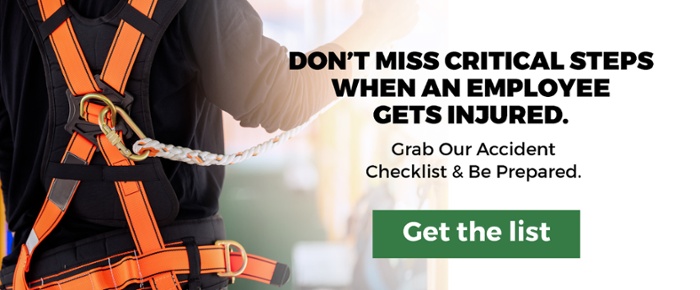Safety is paramount in the construction industry, where workers face daily risks and hazards. With heavy machinery, working at heights, and exposure to hazardous materials, construction sites can be inherently dangerous environments. However, ensuring the safety of workers is not only a moral obligation but also a legal requirement for construction companies. This is where the role of corrective actions comes into play.
In this blog post, we'll delve into the importance of corrective actions in enhancing construction safety standards, exploring how they prevent the recurrence of incidents, mitigate risks, foster a culture of safety, ensure compliance with regulations, and ultimately contribute to a safer working environment for all.
Understanding Construction Safety Standards
Before delving into the role of corrective actions, it's essential to understand the context of construction safety standards. Safety standards are regulations and guidelines set forth by regulatory bodies and industry organizations to ensure the safety and health of workers on construction sites.
These standards cover various topics, including fall protection, electrical safety, hazard communication, and personal protective equipment (PPE). Adhering to safety standards is critical for construction companies to protect their workers from harm and avoid costly accidents and legal liabilities.
Identifying safety issues
Construction sites are dynamic environments with numerous potential hazards and risks. From falls and electrical hazards to exposure to hazardous materials, identifying safety issues is the first step in mitigating risks and preventing accidents.
Regular safety inspections, audits, and risk assessments are essential tools for identifying safety issues and assessing the effectiveness of existing safety measures. By proactively identifying safety issues, construction companies can take corrective actions to address them before they escalate into serious incidents.
Introduction To Corrective Actions
Corrective actions are proactive measures to address hazards, deficiencies, or non-conformances identified through safety inspections, incident investigations, or risk assessments.
Corrective actions are essential to any effective safety management system, signaling a commitment to continuous improvement and proactive risk management. Their primary purpose is to prevent the recurrence of safety incidents by addressing their root causes and mitigating associated risks.
preventing the recurrence of incidents
One of the most significant benefits of corrective actions in construction safety is their role in preventing the recurrence of incidents. By conducting thorough investigations to determine the root causes of safety incidents, construction companies can identify underlying factors contributing to safety issues and implement corrective actions to address them.
For example, if a worker sustains an injury due to a faulty piece of equipment, implementing corrective actions such as repairing or replacing the equipment, providing additional training, or enhancing safety protocols can prevent similar incidents from occurring in the future.
Mitigating Risks and Hazards
Construction sites are rife with risks and hazards, ranging from falls and electrical hazards to exposure to hazardous materials. Corrective actions are crucial in mitigating these risks by identifying potential hazards and implementing measures to control or eliminate them.
For instance, if a risk assessment identifies a potential fall hazard on a worksite, corrective actions such as installing guardrails, providing fall protection equipment, or implementing safe work practices can reduce the likelihood of accidents and injuries.
Fostering a Culture of Safety
A strong safety culture is essential for promoting a safe working environment and preventing accidents in construction. Corrective actions contribute to building and maintaining a positive safety culture by demonstrating a commitment to employee well-being and continuous improvement.
When workers see that their concerns are taken seriously and corrective actions are promptly implemented to address safety issues, they are more likely to actively participate in safety initiatives and adhere to safety protocols. This fosters a sense of accountability, open communication, and shared responsibility for safety among all construction team members.
Related Content: How to Build a Construction Incident Report
ensuring compliance with regulations
Compliance with safety regulations and standards is a legal and moral obligation for construction companies. Corrective actions are vital in ensuring compliance by addressing safety deficiencies and mitigating risks to workers' health and safety.
By conducting regular safety inspections, investigating incidents, and implementing corrective actions as necessary, construction companies demonstrate their commitment to upholding safety standards and protecting their workforce from harm.
conclusion
corrective actions are crucial in enhancing construction safety standards and fostering a safety culture in the construction industry. By preventing the recurrence of incidents, mitigating risks, fostering a culture of safety, ensuring compliance with regulations, and ultimately contributing to a safer working environment for all, corrective actions are indispensable tools for construction companies committed to protecting the health and well-being of their workers.
It is imperative for construction companies to prioritize proactive safety management and implement effective corrective measures to mitigate risks, prevent accidents, and promote a culture of safety on construction sites.


















